This drought has been crazy. Aside from birds, I’m just not seeing the usual wildlife species that hang around the garden — most notably butterflies are absent. I think it’s just too ridiculously hot. That being said, I’m seeing all sorts of other cool creatures around, and happily so.
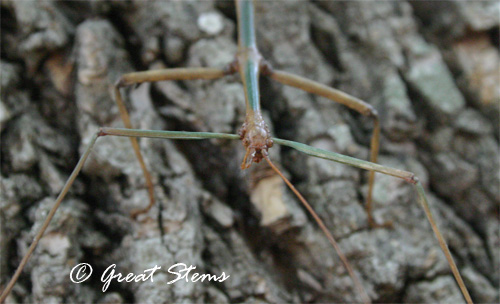
We came home one day to a stick insect not-so-camouflaged on our garage door. I moved it over to a tree where it seemed much more at home. Pictures got harder, though.
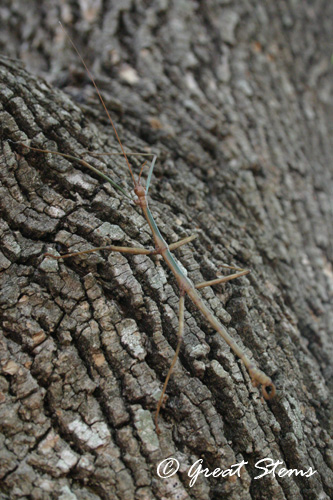
Check out its scorpion-like display:
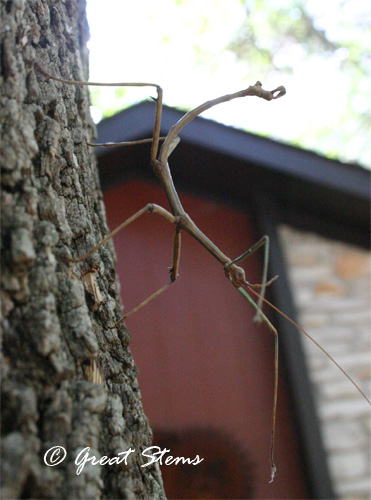
Clearly I liked it more than it liked me.
Our front pond has been busy with aquatic life. Apparently, it’s become THE place to lay eggs.
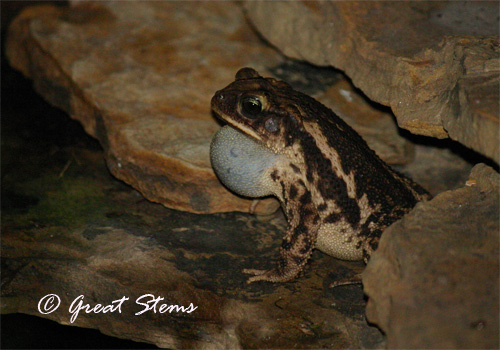 The male toads are singing each night, doing their best to entice a female for a dip in the pond.
The male toads are singing each night, doing their best to entice a female for a dip in the pond.
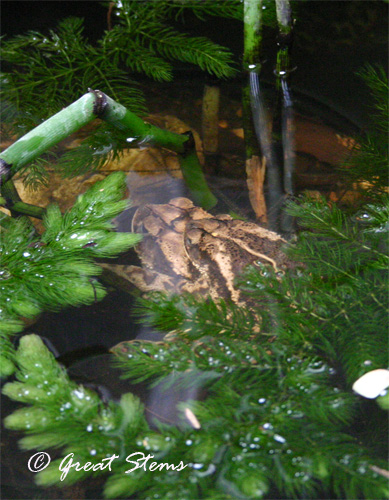
Sometimes one even gets lucky!
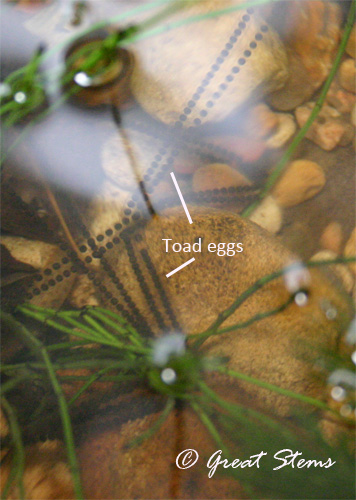
Toad eggs are laid in long gel-like tubes. The eggs are laid in mass quantity.
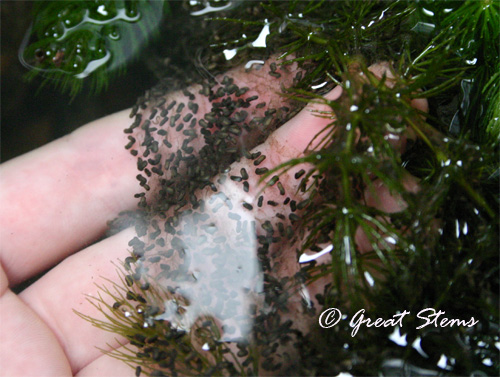
Within just a day or two, the eggs become blobs, also known as embryos.
Here’s a closer view:
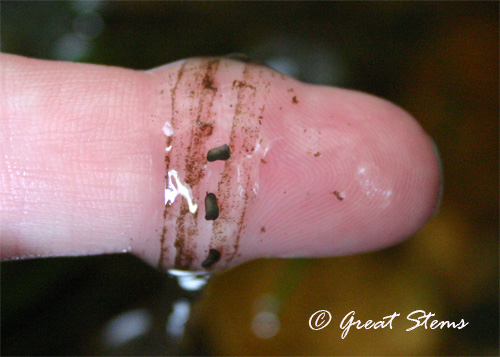
Soon the blobs/embryos become the tadpoles we know and love.
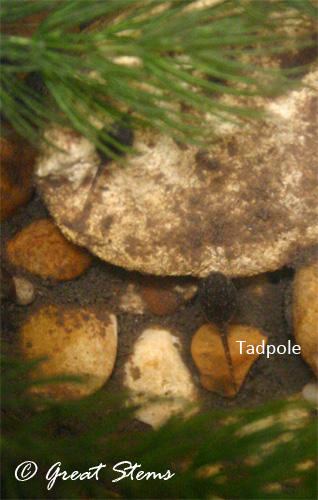 Despite the great numbers of eggs laid, very few make it to adulthood to live the life of a toad. They become food for other creatures, including the one below.
Despite the great numbers of eggs laid, very few make it to adulthood to live the life of a toad. They become food for other creatures, including the one below.
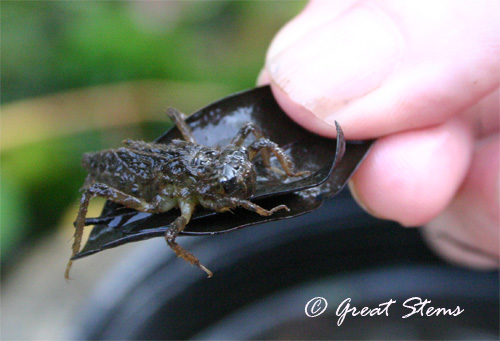 Ewww, you say? I say not! That, my friends, is a dragonfly nymph, and who doesn’t love dragonflies? Other than the bugs they devour, I mean.
Ewww, you say? I say not! That, my friends, is a dragonfly nymph, and who doesn’t love dragonflies? Other than the bugs they devour, I mean.
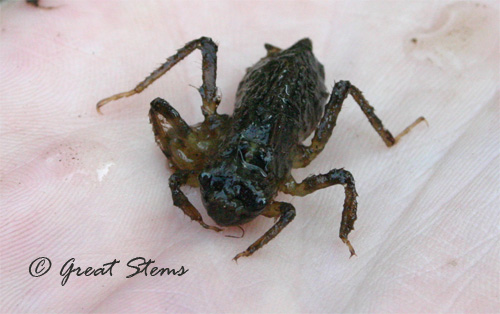 We find these nymphs — damselfly nymphs, too — in our ponds all the time. It turns out that dragonfly nymphs can play dead. They stay very still if briefly removed from the water, but –whoosh!– they’ll zip back to the water depths the moment they feel that water surround them again.
We find these nymphs — damselfly nymphs, too — in our ponds all the time. It turns out that dragonfly nymphs can play dead. They stay very still if briefly removed from the water, but –whoosh!– they’ll zip back to the water depths the moment they feel that water surround them again.
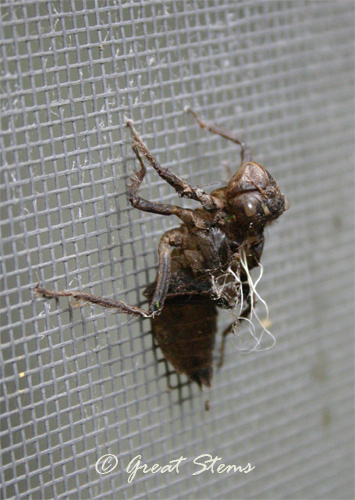
Here’s the exoskeleton left behind after an adult dragonfly emerged and flew away. Those weird-looking white strings are actually tracheal tubes that once transported oxygen. I’m so curious what kind of dragonfly completed its life cycle in our little pond. I’ll never know, I suppose, but I have seen a Neon Skimmer flying around the pond. Who knows… maybe!
Back in the back, our hackberry has these nifty little leaf galls. It turns out that these are caused by Celticesis midges.
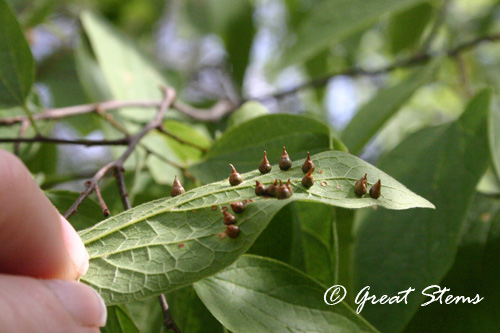
The adult midges, which are little flies, lay eggs on the underside of a hackberry leaf, and the plant tissue forms galls around them. The larvae have a miniature habitat inside the gall, where they eat and develop.
In other news, we had an sssstupendous set of ssssnake sightings last weekend. On a hike at Walnut Creek park, we decided to take paths less traveled for a change. Within moments we discovered this beauty:
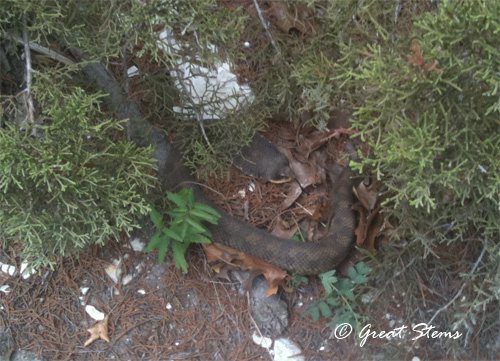
It’s an Eastern Hognosed Snake, flattening its head and hissing something fierce. While I didn’t disturb it more than to take a picture with my camera phone, if I’d gotten much closer, this snake would have flipped upside-down and played dead. Part of me wishes I could have witnessed that, but I just don’t like to stress out wildlife (more than is required for a quick photo op, that is).
In a different area of the park, we found a little snake traveling along dried-up sections of the creek.
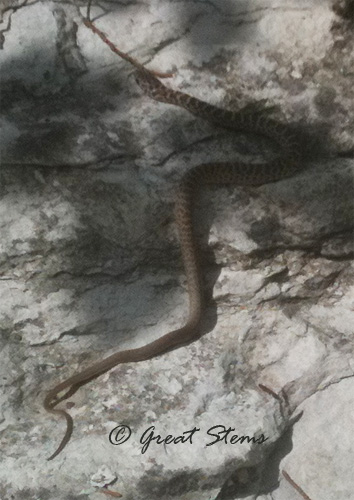 Camera phones and wild snakes just don’t work well together. I really should at least carry a pocket camera on these hikes. But I think this might be a juvenile Yellow-Bellied Racer. It was very small and quickly found a hole to curl up into.
Camera phones and wild snakes just don’t work well together. I really should at least carry a pocket camera on these hikes. But I think this might be a juvenile Yellow-Bellied Racer. It was very small and quickly found a hole to curl up into.
Just seeing these two snakes had already made our day, but when we returned home, we found a little snake in our hallway!
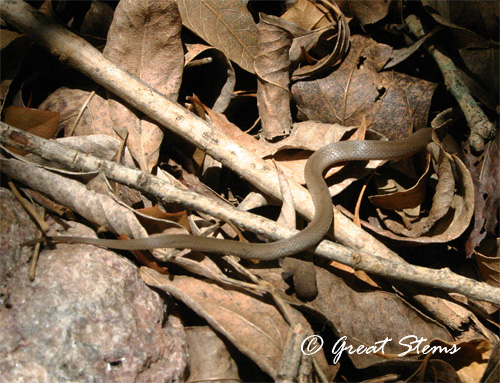 We rescued it and took it outside. I tried to get a picture, but that little snake moved to hide in the leaves as fast as its little no-legs could carry it. The best I can tell you is that it is possibly a snake in the Tantilla genus (perhaps Flathead or Plains Blackhead), or perhaps it is a Rough Earth Snake.
We rescued it and took it outside. I tried to get a picture, but that little snake moved to hide in the leaves as fast as its little no-legs could carry it. The best I can tell you is that it is possibly a snake in the Tantilla genus (perhaps Flathead or Plains Blackhead), or perhaps it is a Rough Earth Snake.
Just a few days later, my friend Diane shared a picture of a molted skin left behind by a friend’s pet snake her family was snake-sitting. She didn’t know the species, but from her description, it sounded like it might be a corn snake.
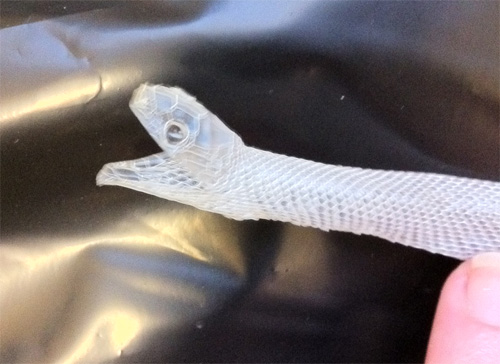
Have you ever seen a snake skin include the head and eye areas? Holy moly, now THAT’S a creature feature.
And the harvestmen are back, this time congregating in the highest eave on my house, making it nearly impossible for me to (get my husband to) kindly move them back to the greenbelt behind the house. Hopefully visitors to my house won’t look up. I’m not taking a picture. Hey, even a wildlife lover can have something to cringe about! They’re good garden predators, so I don’t *really* mind them. In some ways, harvestmen, a.k.a. daddylonglegs, are even kind of cool. But they do creep me out. It has something to do with discovering thousands of them bobbing inches above my head (and my big mass of hair) when I was crawling through a cave.
Instead of harvestmen, I’ll end with a skipper, one of the few butterflies we do get to see from time to time even in this horrible drought.
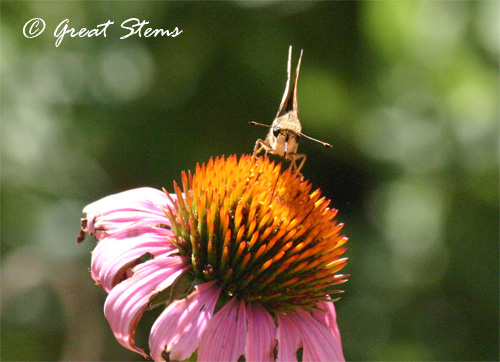
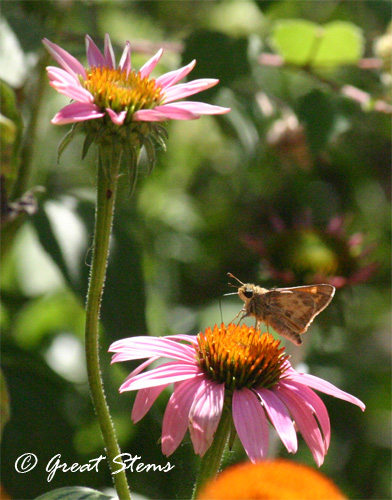 No legs, two legs, four legs, six legs, more — they put the wild in this wildlife garden!
No legs, two legs, four legs, six legs, more — they put the wild in this wildlife garden!
Longlegs freak me out too. Especially a thousand! I know what you mean about butterflies. Kind of sad.
I love your frog series of photos. Also, I have never noticed a dragonfly nymph before. I will now start looking.
nellie
Super creature captures! We have had noticeably fewer butterflies as well. I had galls on my witch hazel earlier this spring. Not sure what hatched out of them. Mother nature is wondrous!
What I love about your posts is there’s always a surprise. Stick bugs? Seen ’em. Toad spawn? Yep. Then I hit the snake photos and the snakeskin (!) and I unfortunately don’t have those. 🙁 Thanks for posting!
We have the dragonfly shells, but I never took time to get close enough to see tracheal tubes! You have set me a mission …
Meredith,
Your skipper in the last photo is a male Sachem, one of the most common skippers in the garden. Thought you might like to know the name for the dragonfly exoskeleton it is called an exuvia. Enjoyed your toad eggs photos. We have lots of baby toads hopping around in the garden right now.
Really informative post. I never saw a dragonfly nymph. And the snake skin, I never saw the head and eyes either. Great find.
Good – I’m not the only one who has found a snake inside the house…
Also, i think those hognose snakes will also fling poop – at least that’s what Bob at Draco has said…
Looks like a male stick insect. We had a couple mating on our fence last year. She was huge, he wimpy. They were at it for a long long time. Interesting to see the eggs of the toad. I have only seen them in blob form in our swimming pool!